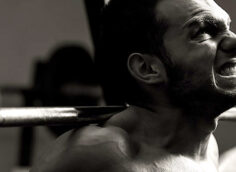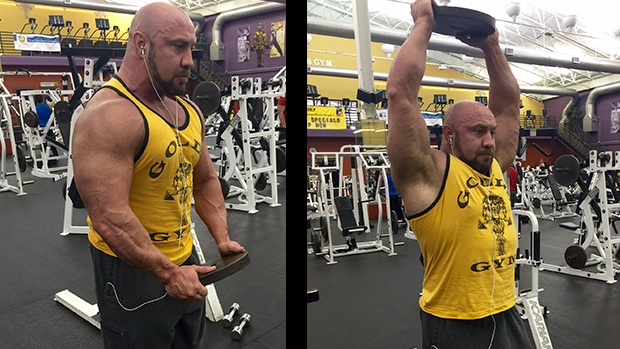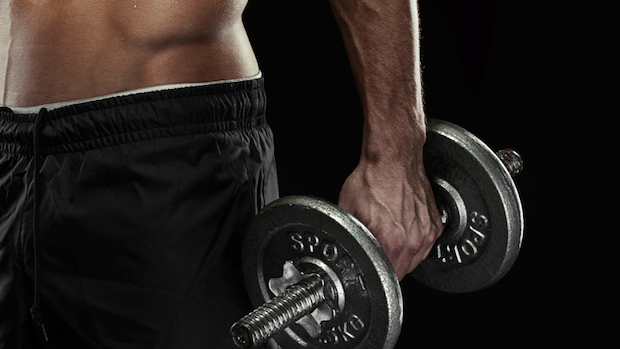We Olympic weightlifters prefer to always have a bar in our hands. We're like babies with a pacifier - a bar in the hand makes us feel all warm and fuzzy. So it should come as no surprise that this article details a warm-up for the Olympic lifts, squats, and deadlifts that uses the barbell, exclusively.
A good warm-up should follow a logical pattern and address three key areas: mobility, activation, and movement prep.
- Mobility: This addresses common areas of range of motion restriction. It should follow a joint-by-joint system that addresses mobile areas above and below stable areas. For Olympic lifting there are three in particular that require attention: the ankle, the hips, and the thoracic spine (specifically, you need extension).
- Activation: Next we stack some muscular work on top of the mobility stuff to keep those patterns available. For example, if we've been working on hip mobility but the glutes still aren't firing, then we aren't done yet. Add some hip mobility drills and some work to activate the muscles around the glutes and you're more likely to keep that newfound mobility.
- Movement Prep: This prepares you for the specific work your sport requires. All the ground-based, slow-paced work in the world isn't going to prepare you for your particular sport. Baseball players should warm-up their arms by throwing the ball; football players should warm-up by running some three-directional sprints; and Olympic lifters should get the bar in their hands before snatching or cleaning.
Similarly, our three-phase Olympic lifting warm-up will have mobility, activation, and movement prep phases.
This warm-up is done in three parts, and each part should be performed for 2-3 sets. The rep scheme for each portion should be about 5-8 reps per exercise, except for the movement prep portion, which should only be performed for 5 reps per exercise.
The four specific areas that we want to mobilize in the Olympic lifts are:
- Ankle
- Hip
- Thoracic spine
- Shoulder external rotation
A lifter that doesn't spend time mobilizing these areas could have problems executing the lifts with any semblance of good technique. A lack of mobility in these areas can lead to compensatory patterns that could cause injury.
One note about this mobility piece: while there are equal or better mobility drills that can be done without the bar for the hip, t-spine, and shoulder, I argue that there isn't a better mobility solution for the ankle than the above drill.
This drill is specific and effective for squatting. Let's just admit that nobody's ankle mobility has ever improved through "wall ankle mobs."
The activation phase is intended to stack stability around the newfound mobility. For that we're going to look to stabilize at the pelvis, trunk, and shoulder specifically.
Mobility with no stability is just a floppy mess. As you go through this phase of the warm-up, make sure to feel yourself activate (or contract) at points where stability is required.
Here you'll do three movements, each with a specific area of activation.
- Romanian Deadlift (glute activation): Don't rush through this movement. Feel yourself extend the hips fully at the top.
- Squatting Muscle Snatch with Trap Raise (shoulder stability): To lock in shoulder stability, pull through a full range of motion and then press the bar with a trap raise at the top. This is also an awesome move for practicing good "tight bar" technique.
- Overhead Squat (trunk activation): The last piece of activation is to work on stabilizing the trunk throughout the movements. Without trunk stability you won't be able to maintain position in the lifts. Now you could certainly hammer out some overhead squats without even thinking about having a stable trunk, so the key is to really focus on finding and maintaining stability.
The final piece of the warm-up puzzle is to start performing the movements at a lower intensity. Like a baseball pitcher, this is your "bullpen" session before hitting the mound, but without the silly socks.
The movement prep phase will advance in both range of motion and technical difficulty by starting from an easy short range of motion and progressing to a full lift. This allows you to practice every piece of the Olympic lift.
- Muscle Snatch from Hip: Practice the pull and turnover of the lift, keep the bar close throughout and turn the hands over at the top.
- Power Snatch with 2 Halts: Now we'll start grooving a good bar path. Move the bar in towards you as pull off the ground, and keep pulling into you as you pass the knee. Finish with an aggressive pull.
- Second Pull Snatch: Move slowly through the pull until the bar reaches the mid-thigh, and then practice jumping under the bar with great speed.
Life's too short to spend half an hour doing meaningless warm-up drills that do nothing but sap your energy and annoy the daylights out of you. If you have the heart of an Olympic lifter - the type of heart that only feels good when there's a barbell in your hand - then give this bar warm-up a shot.





